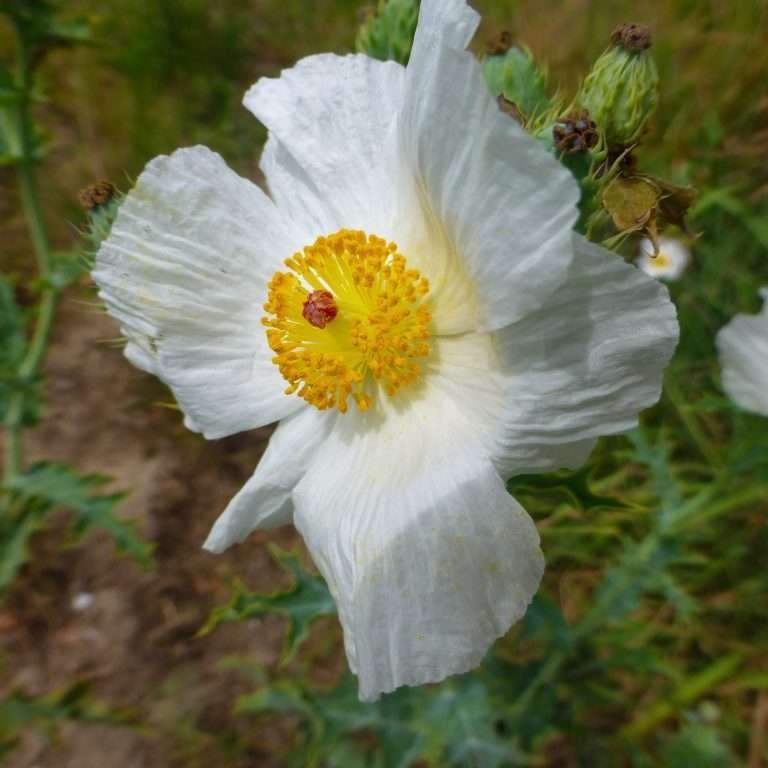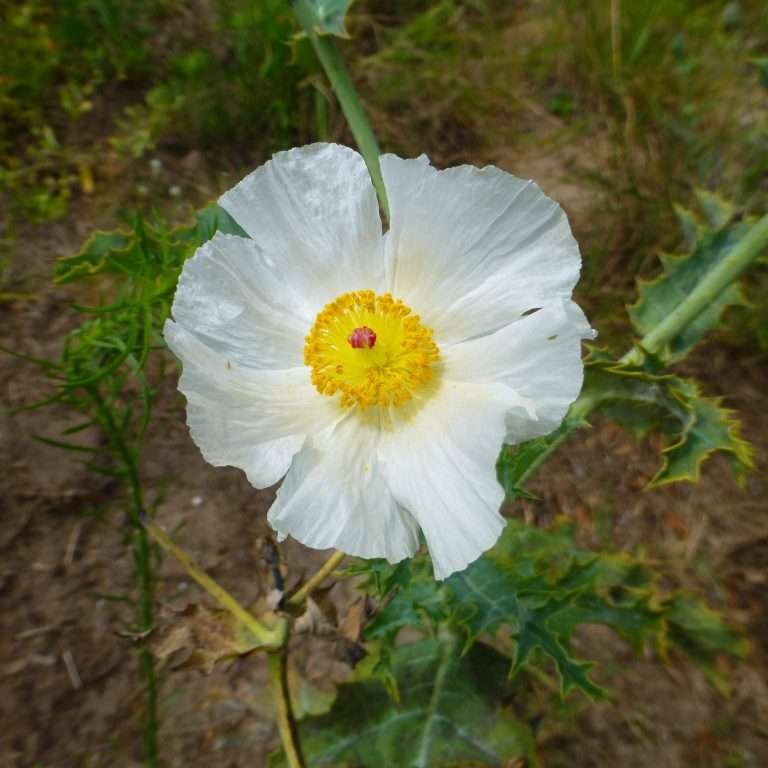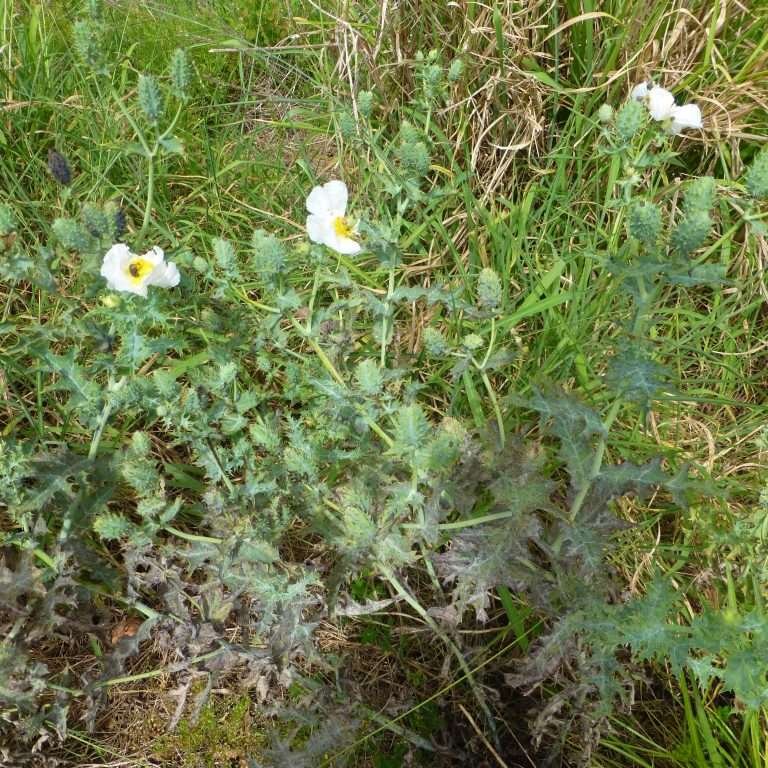
Argemone albiflora
(Bluestem Prickly-poppy)

Common Names, Latin Name, and Family
Some of its common names include white poppy, Texas poppy, prickly poppy, pricklypoppy, and Carolina poppy.
Its Latin name is Argemone albiflora.
Previously known as Argemone alba.
It is found in the Papaveraceae, or poppy, family.
Form
Blustem prickly poppy is an annual wildflower that grows to a height of 2 to 3 feet.
Leaves
The leaves are alternate and clasp around the stem. The incised margins are sharply toothed. They are lanceolate to obovate in shape and are very spiny. The foliage has a blueish tint to it.

Flowers
The flowers appear in the spring, summer and fall. The petals are crinkled, and look like crepe paper, with a bright yellow center.
The seeds are contained within spiny capsules.

Habitat
Bluestem prickly poppy is found growing in disturbed sites, roadsides and dry areas.
Native Range
Bluestem prickly poppy is found growing in AL, AR, CT, FL, GA, IA, IL, KY, LA, MA, MD, MI, MO, MS, NC, NY, OH, SC, TN, TX, and WI.
In Florida it is found naturally occurring in scatter counties throughout the state.
It grows in zones 6 through 9.
Landscape Use
In the home landscape it should be planted in an area away from traffic because it is a very spiny plant. It is considered poisonous so keep well away from children, pets and livestock. Although livestock tend to avoid this plant. When the plant, or stems, are cut it exudes a yellow latex sap that causes staining to clothing and gloves.

Wildlife Use
The flowers are a source of nectar for many insects including bees, beetles, butterflies, flies, and wasps.
The spiny foliage provides a protected area for some insects.
It is deer resistant.
The seeds are eaten by quail and songbirds that feed on the ground.
Medicinal Use
Seed tea is emetic, purgative, demulcent. Plant infusion used for jaundice, skin ailments, colds, colic, wounds. Externally, used for headaches. Folk remedy for cancers. itching and scabies. Warning: Contains toxic alkaloids. Seed oil causes glaucoma and edema. [1]
Propagation
Since this is an annual it is best grown from seed, however, small plants should successfully be transplanted.
I have blustem prickly-poppy seeds for sale at my eBay Store.

Footnote:
[1] Foster, Steven, and James A. Duke. A Field Guide to Medicinal Plants: Eastern and Central North America. Houghton Mifflin, 1998.